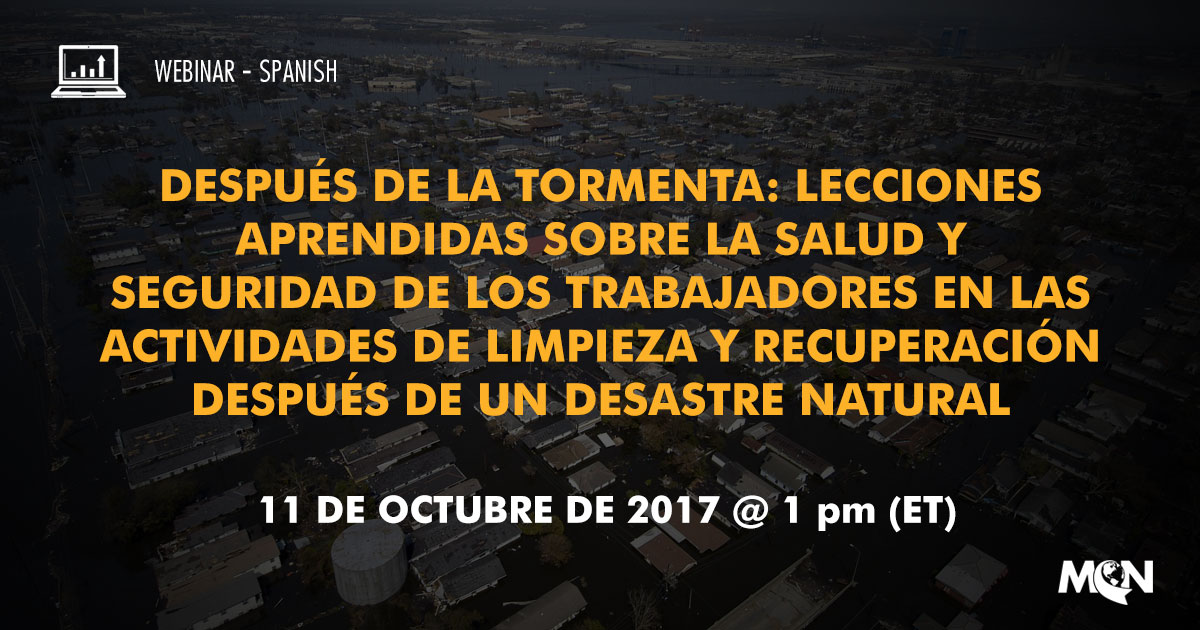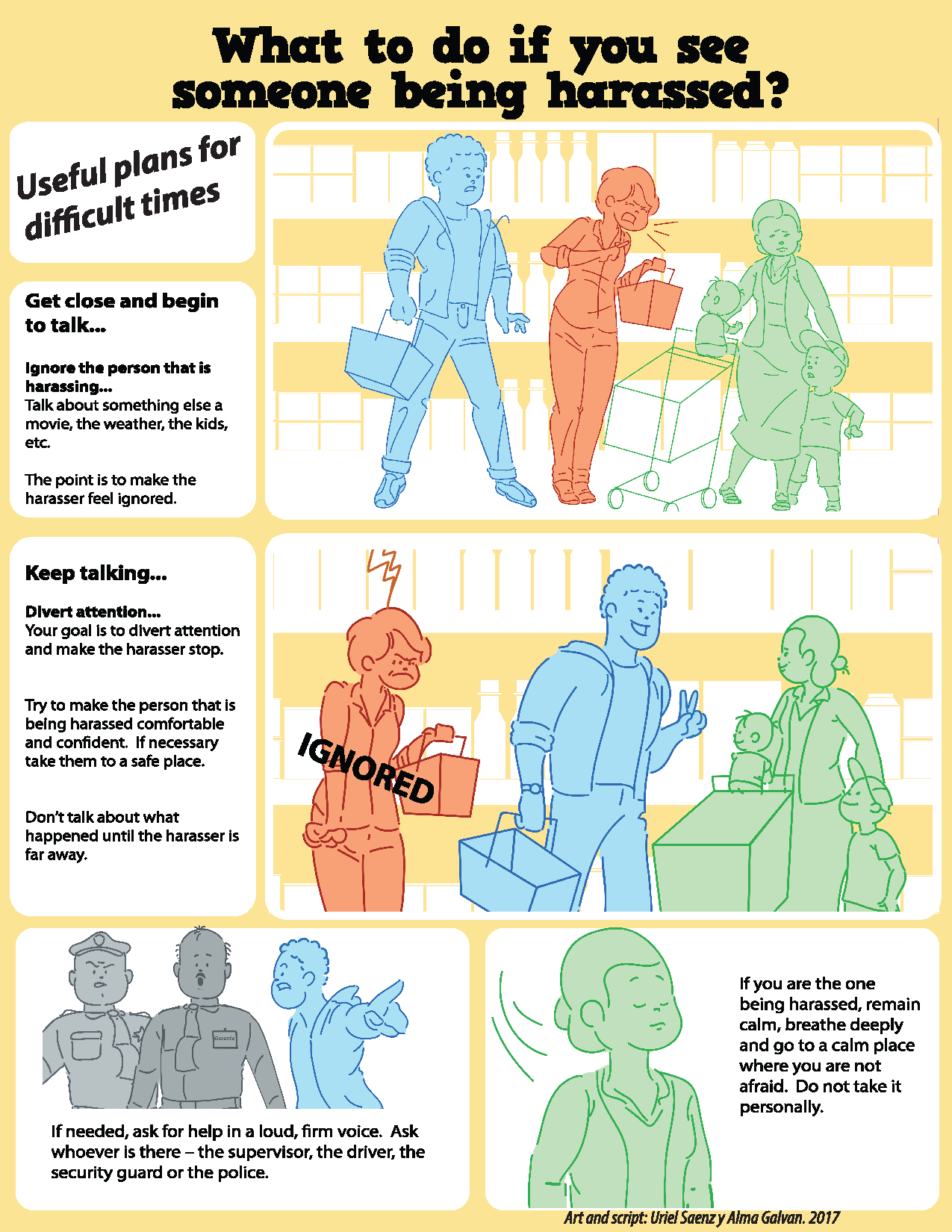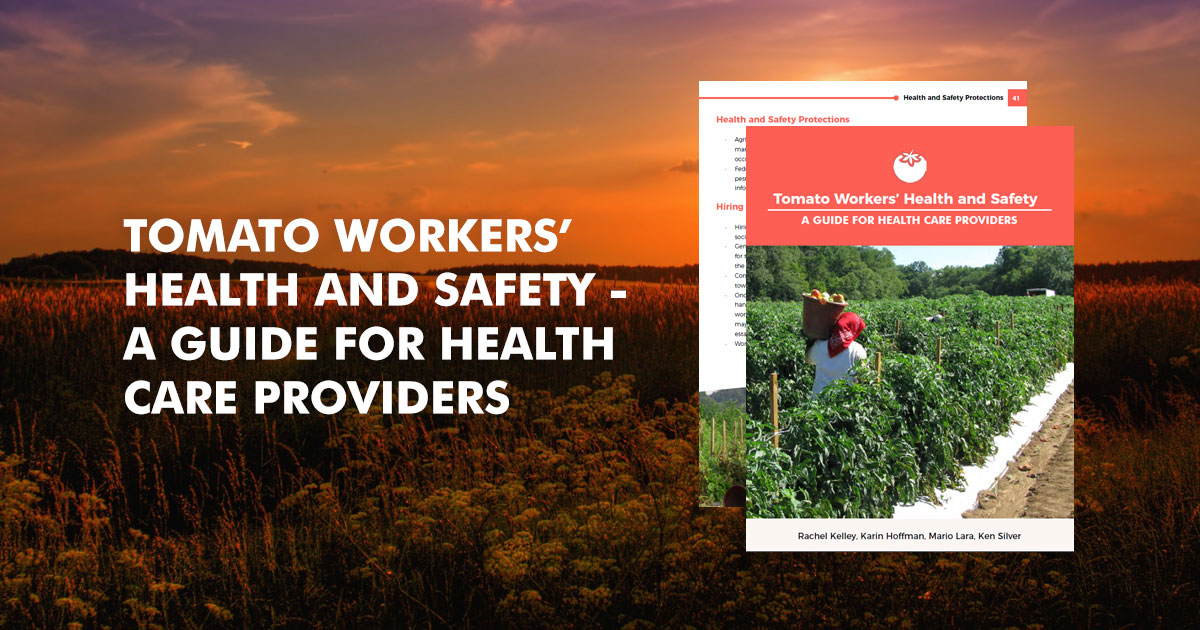This list of resources compiled by the federal government of Mexico were chosen because the Mexican government is doing a commendable job alerting their health workers to new essential information and providing easy to understand resources. With a limited number of Spanish language resources available in the US, this list fills important gaps.
These infographics and social media cards are simple and bright. The order in which the recommendations are presented is great.
This list of resources was selected because of the breadth of languages and the simplicity of the infographics.
APHA's Get Ready campaign helps Americans prepare themselves, their families and their communities for all disasters and hazards, including pandemic flu, infectious disease, natural disasters and other emergencies.
The Hesperian provides excellent patient education material on COVID-19 in a number of languagues for use internationally or with immigrant communiites in the United Sates.
Diabetes is a common but complicated health condition facing agricultural workers within the United States. To help assist agricultural workers in learning about this diagnosis, Migrant Clinicians Network has partnered with professional artist and collaborator Salvador Sáenz to create “Mi salud es mi tesoro: Un guía para vivir bien con diabetes,” or, “My Health is My Treasure: A Guide to Living Well with Diabetes.” This low-literacy comic book explores the topic through the full-color story of an agricultural farmworker named Goyo, whose recent diagnosis of diabetes prompts him to engage in conversations with other agricultural workers on topics of diet, exercise, and illness prevention while facing the unique hurdles of living a life of migration. The comic book was originally produced in Spanish, and is now available in English below. Please click "Leer en español" above to access the Spanish-language version.
In order to print the right number of comic books, we are asking organizations to pre-order in quantities up to 500. The comic book and shipping will be paid for by MCN. In exchange, we simply ask that you, or someone from your organization, complete an evaluation of the comic book several months after you first receive it. Information from the evaluation will help us improve our resources and will give us important insight into how the comic book is being used in the community.
Download a digital copy of the comic book below!
- 2022-6-13_My-Health-Is-My-Treasure_Comic_WEB.pdf (4.97 MB)
- 2022-6-13_My-Health-Is-My-Treasure_Comic_PRINT.pdf (38.95 MB)
- 2023-8-4_Mi-salud-es-mi-tesoro_Comic_WEB_0.pdf (4.87 MB)
- 2023-8-4_Mi-salud-es-mi-tesoro_Comic_PRINT.pdf (38.74 MB)
- 2023-8-21_Mi-salud-es-mi-tesoro_PuertoRico_Web_0.pdf (5.74 MB)
- 2023-8-21_Mi-salud-es-mi-tesoro_PuertoRico_PRINT.pdf (40.76 MB)
These Spanish and English cholesterol patient education resources were developed by the University of Texas Health Science Center at Houston and the School of Public Health, El Paso Regional Campus. The artwork was done by Salvador Saenz, a well-known and respected public health educator and artist based in El Paso, TX
- CHOLESTEROL NOVELLA fast version_0.pdf (2.99 MB)
- CHOLESTROL PROMOTORA GUIDE fast version_1.pdf (623.95 KB)
- COLESTEROL NOVELA version rapida_0.pdf (2.97 MB)
- COLESTROL GUIA PROMOTORA version rapida_0.pdf (631.83 KB)
These Spanish and English hypertension patient education resources were developed by the University of Texas Health Science Center at Houston and the School of Public Health, Ele Paso Regional Campus. The artwork was done by Salvador Saenz, a well-known and respected public health educator and artist based in El Paso, TX.
- HIPERTENSION GUIA PROMOTORA version rapida.pdf (892.13 KB)
- HIPERTENSION NOVELA version rapida.pdf (2.15 MB)
- HYPERTENSION NOVELLA fast version.pdf (2.07 MB)
- HYPERTENSION PROMOTORA GUIDE fast version_0.pdf (810.49 KB)
- SODIO GUIA PROMOTORA version rapida_0.pdf (607.74 KB)
- SODIO NOVELA version rapida_0.pdf (2.2 MB)
- SODIUM NOVELLA fast version_0.pdf (2.18 MB)
- SODIUM PROMOTORA GUIDE fast version.pdf (598.15 KB)
¡Hazlo por ellos! Pero por ti también. Historias de tres mujeres latinas y sus desafíos y éxitos en mantener un estilo de vida saludable para disminuir o retrasar el desarrollo de la diabetes tipo 2. Disponible en español e inglés.
Incluye guías, carteles, concursos, música y podcasts, y recursos de capacitación y evaluación. Disponible en español.

FECHA: 11 de Octubre de 2017 @ 1 PM (ET)
PRESENTADORES:
- Alma R. Galván, MHC, Migrant Clinicians Network
- Richard Rabin, MassCOSH
- Rossana Coto-Batres, MSW, Northeast New York Coalition for Occupational Safety and Health (NENYCOSH)
Crédito de educación continua
Para recibir credito de Trabajador/a de Salud Comunitaria o Educacion de Continua de Enfermera después de ver alguno de estos seminarios usted debe hacer lo siguiente:
- Completar la evaluación participante asociado a cada webinar
- Enviar un correo electrónico con su nombre y apellido indicando que ha completado a malvarado@migrantclinician.org
Descripción
Conforme las familias regresan a sus hogares en Houston, una vez que las inundaciones causadas por los Huracanes Irma y María se van retirando, esto se convierte en una carrera contra el tiempo. Un olor sofocante llena los cuartos de las casas, los charcos permanecen en los pasillos, y el moho se multiplica rápidamente. En cuestión de días, los patios ensopados de los vecinos se convierten en tiraderos de basura, conforme los trabajadores empiezan a quitar de las casas las paredes con moho, los pisos y los cielos destruidos, así como los muebles dañados. En este proceso, los trabajadores y muchos residentes se exponen al agua contaminada con químicos y basura, materiales de construcción peligros y alimañas dañinas. Pero hay otros riesgos adicionales, estructuras inestables y posibles intoxicaciones por monóxido de carbono de los generadores que trabajan incansablemente en espacios con poca ventilación. La exposición a asbestos, sílice y plomo son también peligros comunes para estos trabajadores.
Katrina, Sandy, Harvey, Irma y ahora Maria: son nombres de tormentas que nos indican las diferentes comunidades que terminaron bajo el agua, pero muchas de las historias emanadas de ellas, sobre la limpieza -- y los peligros involucrados-- son las mismas. Con resiliencia y determinación, las comunidades se tratan de reconstruir, pero la reconstrucción necesita una fuerza de trabajo inmediata, lista para este trabajo peligroso y extenuante.
Las operaciones de recuperación después del desastre, limpieza y reconstrucción presentan muchos riesgos y peligros para los trabajadores. Muchos de ellos realizan este trabajo sin el equipo de seguridad o el entrenamiento de mitigación de peligros adecuado.
En la recuperación de una supertormenta, ¿cuáles son las vulnerabilidades que los trabajadores enfrentan y qué significa eso para la seguridad y la salud del trabajador? Las siguientes preguntas surgen para los proveedores y trabajadores de salud comunitarios que cuidan y se preocupan por estos trabajadores: ¿cuáles son los puntos claves que necesitamos entender para poder cuidar de aquellos involucrados en estos esfuerzos de limpieza y reconstrucción? y ¿qué podemos hacer para que ellos mismos prevengan las lesiones y las enfermedades?
Este seminario en línea recupera experiencias obtenidas de desastres naturales anteriores y ofrece recursos que le pueden guiar en su trabajo. Ofreceremos casos reales para ilustrar los peligros y revisaremos formas en que los trabajadores se pueden proteger a sí mismos, incluyendo el entendimiento de sus derechos y responsabilidades.
Objetivos de aprendizaje
- Los participantes identificarán los peligros más comunes y críticos que los trabajadores y residentes encuentras cuando se involucran en la demolicion y reconstruccion despues de un desastre.
- Los participantes articularán las mejores estrategias para educar a los trabajadores y residentes sobre como prevenir lesiones y enfermedades durante las actividades de limpieza y reconstrucción después de huracanes y supertormentas.
- Los participantes enlistarán al menos tres recursos que pueden usar para guiar a los trabajadores y residentes durante la demolición y reconstrucción después de un desastre.
Este proyecto cuenta con el apoyo de la Administración de Recursos y Servicios de Salud (HRSA) del Departamento de Salud y Servicios Humanos de los Estados Unidos bajo el acuerdo de cooperación número U30CS09742, Asistencia Técnica a Centros de Salud Comunitarios y Migrantes y Personas sin Hogar por $ 1,094,709.00 con 0% del total Proyecto NCA financiado con fuentes no federales. Esta información o contenido y las conclusiones son las del autor y no deben ser interpretadas como la posición o política oficial de, ni cualquier endosos deben ser inferidos por HRSA, HHS o el Gobierno de los Estados Unidos.
This resource offers training for community based organizations and workers in the aftermath of natural disasters. It includes educational materials as well as trainer guides and tools.
Blog post from the U.S. Department of Labor highlighting common hazards during hurricane cleanup as well as links to additional readings.
Information on keeping food and water safe for consumption and best hygiene practices in the face of disasters.
Offers tips about potential hazards and protective strategies during disaster cleanup.
Resources in English and Spanish from Florida State University's Center for Child Stress and Health on how to talk to a child about deportation and associated stress.
- CCSH_Deportation_EN.pdf (72.55 KB)
- CCSH_Deportation_SP.pdf (70.94 KB)
Available in English and Spanish!
Created by MCN, medical student Rachel Kelley of UCSF, and collaborators at East Tennessee State University, this guide is intended to be a reference for health care providers who work with people employed in the U.S. tomato industry. It aims to prepare providers with a more detailed understanding of hazards, health issues, and work processes associated with different tomato industry jobs.
This guide draws on published research, experienced health professionals’ advice, and information gathered from interviews and focus groups conducted with 36 tomato workers from diverse backgrounds and 14 community leaders familiar with tomato workers’ health in multiple states. It is important to note that health and safety conditions at any particular farm or company may vary from what is described here. Furthermore, individual workers may experience the same set of conditions differently.
The first section of the guide focuses on health hazards and health conditions commonly encountered in tomato production. The second section consists of detailed descriptions and illustrations of different tomato production tasks. The third section covers “human resources” information and policies that apply to U.S. agricultural workers generally. The appendices contain a Spanish-English glossary, further detail about different types of pesticides, information about agricultural occupational health policies and regulation, and a list of resources and readings.
A kit from the CDC designed to help reduce the risk of infection by the Zika virus. "If you live in a state or area with the mosquito that spreads the Zika virus and are concerned about Zika, build your own Zika Prevention Kit (...). Reducing the risk for Zika is particularly important for pregnant women."
Information from the CDC on the Zika Virus and pregnant women.
Zika educatinal materials from the Texas Department of State Health Services which includes fact sheets, push cards, posters, and TV PSAs. Available in both English and Spanish.

FECHA DE GRABACION: 5 de Abril de 2017, 1 pm ET (zona horaria del Este)
ORADORA: Ileana Ponce-González, MD, MPH, CNC
Crédito de educación continua
Para recibir credito de Trabajador/a de Salud Comunitaria o Educacion de Continua de Enfermera después de ver alguno de estos seminarios usted debe hacer lo siguiente:
- Completar la evaluación participante asociado a cada webinar
- Enviar un correo electrónico con su nombre y apellido indicando que ha completado a contedu@migrantclinician.org
Descripción
En este webinar, los participantes podrán identificar las medidas de desempeño de la Administración de Servicios de Recursos de Salud relacionadas con la hipertensión, describir cómo medir la hipertensión en el cuerpo, entender cómo alentar a los pacientes a controlar y manejar su presión arterial alta y entender las principales barreras que enfrentan pacientes en el control y manejo de su presión arterial alta.
Objetivos de aprendizaje
- Identificar los síntomas y signos de presiones sanguíneas altas
- Describir cómo se puede medir la hipertensión en el cuerpo
- Alentar a los pacientes a controlar y manejar su presión arterial alta
- Comprender las principales barreras que enfrentan los pacientes en el control de su presión arterial alta
Lectura Adicional
- HRSA: Hypertension Controls
- NIH: Help Your Heart: Control Your High Blood Pressure - Handouts
- NIH: Description of High Blood Pressure
- NIH: How Is High Blood Pressure Treated?
- NIH: Impediments to and potential strategies for effective blood pressure control
- USPSTF, AAFP Finalize Hypertension Screening Recommendations for Adults
- WSDF: Improving the Screening, Prevention, and Management of Hypertension
Este proyecto cuenta con el apoyo de la Administración de Recursos y Servicios de Salud (HRSA) del Departamento de Salud y Servicios Humanos de los Estados Unidos bajo el acuerdo de cooperación número U30CS09742, Asistencia Técnica a Centros de Salud Comunitarios y Migrantes y Personas sin Hogar por $ 1,094,709.00 con 0% del total Proyecto NCA financiado con fuentes no federales. Esta información o contenido y las conclusiones son las del autor y no deben ser interpretadas como la posición o política oficial de, ni cualquier endosos deben ser inferidos por HRSA, HHS o el Gobierno de los Estados Unidos.
- http://migrantclinician.adobeconnect.com/p71v9ojksgg/?OWASP_CSRFTOKEN=19499ccb24fdb83af0f6a5e559d20d4f5fffa5406927c78fbb67676b38141c94
- http://www.hrsa.gov/quality/toolbox/measures/hypertension/
- https://www.nhlbi.nih.gov/health-pro/resources/heart/hispanic-health-manual/session-4#handouts
- https://www.nhlbi.nih.gov/health/health-topics/topics/hbp
- https://www.nhlbi.nih.gov/health/health-topics/topics/hbp/treatment
- https://www.ncbi.nlm.nih.gov/pmc/articles/PMC1993926/table/tbl1/
- http://www.aafp.org/news/health-of-the-public/20151015htnprevrec.html
- https://www.healthit.gov/sites/default/files/13_bptoolkit_e13l.pdf

A guide to know how to react when you see someone being harassed. Art and script by Uriel Saenz and Alma Galván.
Chapter 14: Pesticides Are Poison from the Hesperian.org health guide: A Community Guide to Environmental Health.
A flier created by the CDC's National Diabetes Education Program as a guide for patients in the management of medicines to treat diabetes. Available in English.
- Diabetes and You - All Medicines Matter.pdf (442.21 KB)
An educational comic book on the prevention of zoonotic illnesses. Developed by MCN in collaboration with Ohio State University.
- Working with farm animals_1.pdf (13.33 MB)
- Trabajos con animales en un rancho_1.pdf (13.31 MB)

DATE RECORDED: August 17, 2016 at 1 pm ET
PRESENTED BY: Amy Liebman, MPA, MA and Wilson Augustave, member of MCN’s Board of Directors and Senior HIV Case Manager at Finger Lakes Community Health
This material will be produced under grant number SH-27640-15-60-F-48-SH5 from the Occupational Safety and Health Administration, U.S. Department of Labor. It will not necessarily reflect the views or policies of the U.S. Department of Labor, nor does mention of trade names, commercial products, or organizations imply endorsement by the U.S. Government.
- http://migrantclinician.adobeconnect.com/p50hmpih2ti/?OWASP_CSRFTOKEN=3e2b187aeeb1282a41d5df37d8a98c307a7e00006662aca9d5f21dc12aa036c4
- http://www.migrantclinician.org/
- http://workerscomphub.org/
- http://workerscomphub.org/navigating-system
- https://www.osha.gov/workers/index.html
- http://www.coshnetwork.org/know-your-rights
- http://hesperian.org/books-and-resources/
Este diccionario ilustrado bilingüe de MCN, "Seguridad en Palabras/ Safety in Words", muestra los peligros que hay en el lugar de trabajo y las mejores prácticas para la salud y la seguridad en la agricultura. Desarrollado con el apoyo del Programa de Subvenciones Susan Harwood de OSHA, este recurso refuerza el vocabulario en inglés de los trabajadores que hablan español lo que ayudará a prevenir lesiones en la agricultura.
This colorful bilingual comic addresses workers' compensation and immigrant dairy farm workers’ rights and responsibilities. It tells the story of a Mexican dairy farm worker who is injured on the job and the steps he and his employer take to make sure he receives his benefits, and the farm improves its safety.
- DairyWrkrRightsWrkComp_ENG2016_web.pdf (7.78 MB)
- DairyWrkrRightsWrkComp_ESP2016_web.pdf (7.92 MB)
- COMIC - Safety and Health on the Farm - New Mexico - English.pdf (3.4 MB)
- COMIC - Safety and Health on the Farm - New Mexico - Spanish.pdf (3.41 MB)
- COMIC - Safety and Health on the Farm - New York - English.pdf (3.45 MB)
- COMIC - Safety and Health on the Farm - New York - Spanish.pdf (3.46 MB)
- COMIC - Safety and Health on the Farm -Minnesota -English.pdf (7.78 MB)
- COMIC - Safety and Health on the Farm - Minnesota - Spanish_0.pdf (7.91 MB)
